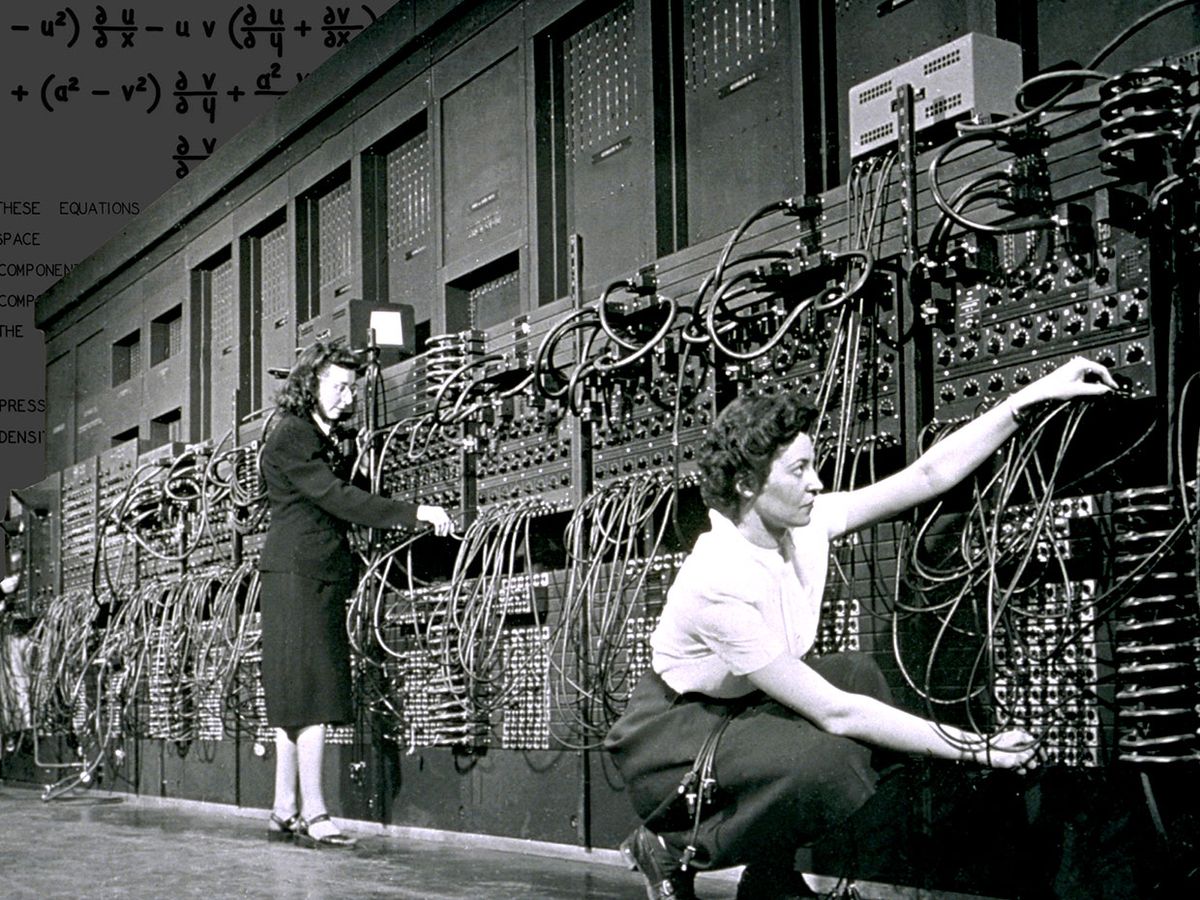 |
| Marlyn Wescoff and Ruth Lichterman Programming ENIVAC |
Although I lived through early stages of the digital age with avid enthusiasts in my family and on the job using a main frame, I was fascinated by Walter Isaacson's book The Innovators.
I learned many surprising things when I read Isaacson's book. In
it he traces the development of the digital age from its inception
until the year 2014 when the book was published. It all started with a
desire for making difficult calculations simpler and less time
consuming. Mechanical devices offered some success but many small
advances were required before the first electronic computer could be built. In the mid 1930's using vacuum tubes as on/off
switches in electronic circuits sped up processing which had relied on
electromechanical switches. The advances in computing in the 1930's
"came from a combination of capabilities, ideas, and needs that
coincided in multiple places," as Isaacson states.
The military became involved because of the need to make tedious calculations for trajectories for guns after the entry of the United States into World War II in December 1941. In 1943 The U. S. War department decided to fund an electronic computer and the construction of the ENIVAC soon began. Although the Defense Department financed much of the development of early computers and of the internet, the academics and researchers who were were directly involved making technical decisions and doing the work, designed a system for collaboration and research. On page 251 we read, "'Janet Abbate noted ... the group that designed and built ARPA's networks was dominated by academic scientists, who incorporated their own values of collegiality, decentralization of authority, and open exchange of information into the system.' These academic researchers of the late 1960's, many of whom associated with the antiwar counterculture, created a system that resisted centralized command. It would route around any damage from a nuclear attack but also around any attempt to impose control."
A system using personal computers for working alone, along with connectability to a web of other users, took many more steps before individuals had access to data and the ability to interact with one another through electronic devices. The system developed out of the effort of many thinkers and engineers and innovators working together or working in isolation or in groups to invent specific procedures which could be fitted together. It involved a collaborative process which led to unexpected creativity. It depended upon academics, government, businesses and solitary inventors. Computers and networking are built on the work of predecessors who had no inkling of what could follow their innovations.
Although we have been given a toolbox which opens vast possibilities, each of us has a responsibility for using it wisely and circumspectly.
If this post reminds you of your experience with computers please make a comment below. We would be pleased to hear about your initiation, your discoveries, your frustrations, your satisfactions and your hopes.